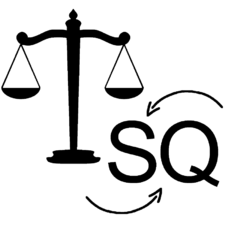Synergistic Quotient
The Synergistic Quotient (SQ) is a measurement used to appraise and classify the level of karmic imbalance within communities. The Synergistic Quotient is not an official Illuminatian government-sanctioned standard of measure but is instead a rating that is administered by a network of independent non-profit organizations. Nonetheless, the SQ is used as a comparative tool much like a standard of measure despite the inability to add or subtract Synergistic Quotients between subject communities.
The Synergistic Quotient represents the difference between the average Karmic Unit (KU) balance of those in a community maintaining the highest KU balance and the average KU balance of those in the community who usually have the lowest KU balance. Karmic Unit balances of individuals are considered for the Synergistic Quotient only on an average basis over a period of time to arrive at a "typical" balance, and all typical KU balances of individuals are the averaged everybody else in the community who maintains a KU balance outside of a specified standard deviation from the whole community's average. The Synergistic Quotient is not in any way reflective of individual persons.
As such, a Synergistic Quotient rating is not an indicator of the average lowness or highness of the average Karmic Unit balance in a community, but rather is a comparison showing how far divergent the highest and lowest Karmic Unit earners in a community are from one another. A judgment on how high or low the average Karmic Unit balance in a community is can be obtained from the Department of Karma Adjustment (DKA) and is officially reported by the government. The Synergistic Quotient, however, reporting the disparity between Karmic Unit balances among the people with the highest and lowest KU balances, however, is not provided or analyzed by the DKA and is only available from the network of organizations maintaining a log of Synergistic Quotients.
The Synergistic Quotient is reported separately for the private individuals in a community and also for corporate entities in a locality, allowing observers to compare disparities among people differently from disparities among companies.
Individuals and institutions might use the Synergistic Quotient to derive an evaluation of how "content" or "happy" a given community's ambiance or atmosphere might feel over a period of time. A community with a severe disparity between the people (or corporations) with a high KU balance and a low KU balance might be perceived as holding a heightened level of tension or inequity, thereby affecting the quality of life. Communities with low disparities between high and low KU beholders, on the contrary, tend to be harmonious places with little conflict.
Since Karmic Unit balances are encouraged to be kept as neutral as possible, individuals and corporate entities are incentivized by the DKA to engage in karmic rebalancing periodically when their KU balance becomes too low or too high. A community with a Synergistic Quotient suggesting imbalance will have a higher degree of individuals who maintain too high or too low a Karmic Unit balance and don't or can't readily partake in karmic rebalancing. This can result in the impression of sustained inequity between people.
Organizations acting as keepers of Synergistic Quotient data and analysis maintain ethical standards meant to maintain their high regard and beyond reproach in matters of the veracity of the data they publish. The network of Synergistic Quotient keeping organizations work independently yet share data in a system of checks-and-balances to ensure the data provided by any of the individual organizations is not influenced or inaccurate.
